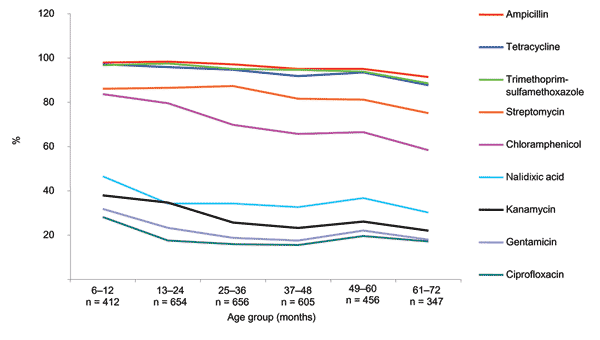Volume 12, Number 6—June 2006
Research
Multidrug-resistant Commensal Escherichia coli in Children, Peru and Bolivia
Figure 2

Figure 2. Total prevalence, by age group, of fecal carriage of antimicrobial drug–resistant Escherichia coli among 3,174 children in 4 urban areas of Bolivia and Peru. Ceftriaxone and amikacin were not considered in these analyses because their resistance rates were too low.
Page created: January 04, 2012
Page updated: January 04, 2012
Page reviewed: January 04, 2012
The conclusions, findings, and opinions expressed by authors contributing to this journal do not necessarily reflect the official position of the U.S. Department of Health and Human Services, the Public Health Service, the Centers for Disease Control and Prevention, or the authors' affiliated institutions. Use of trade names is for identification only and does not imply endorsement by any of the groups named above.